| ________________
CM . . .
. Volume XVI Number 7. . . .October 16, 2009 
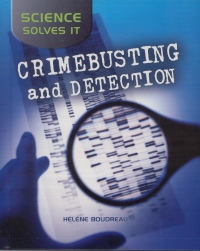 |
Crimebusting and Detection. (Science Solves It).
Hélène Boudreau.
St. Catharines, ON: Crabtree, 2009.
32 pp., pbk. & hc., $9.95 (pbk.), $20.76 (hc.).
ISBN 978-0-7787-4174-9 (pbk.), ISBN 978-0-7787-4167-1 (RLB).
Subject Headings:
Forensic sciences-Juvenile literature.
Criminal investigation-Juvenile literature.
Grades 3-7 / Ages 8-12 .
Review by Barbara McMillan.
***1/2 /4
|
| |
|
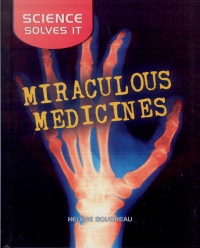 |
Miraculous Medicines. (Science Solves It).
Hélène Boudreau.
St. Catharines, ON: Crabtree, 2009.
32 pp., pbk. & hc., $9.95 (pbk.), $20.76 (hc.).
ISBN 978-0-7787-4175-6 (pbk.), ISBN 978-0-7787-4168-8 (RLB).
Subject Headings:
Medical innovations-Juvenile literature.
Medicine-Juvenile literature.
Grades 3-7 / Ages 8-12.
Review by Barbara McMillan.
***½ /4
|
| |
|
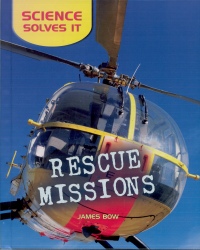 |
Rescue Missions. (Science Solves It).
James Bow.
St. Catharines, ON: Crabtree, 2009.
32 pp., pbk. & hc., $9.95 (pbk.), $20.76 (hc.).
ISBN 978-0-7787-4176-3 (pbk.), ISBN 978-0-7787-4169-5 (RLB).
Subject Headings:
Rescues-Juvenile literature.
Rescue work-Juvenile literature.
Fire fighters-Juvenile literature.
Grades 3-7 / Ages 8-12.
Review by Barbara McMillan.
*** /4
|
| |
|
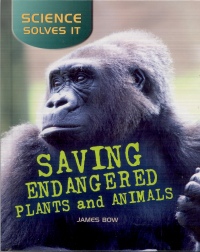 |
Saving Endangered Plants and Animals. (Science Solves It).
James Bow.
St. Catharines, ON: Crabtree, 2009.
32 pp., pbk. & hc., $9.95 (pbk.), $20.76 (hc.).
ISBN 978-0-7787-4177-0 (pbk.), ISBN 978-0-7787-4170-1 (RLB).
Subject Headings:
Wildlife conservation-Juvenile literature.
Plant conservation-Juvenile literature.
Endangered species-Juvenile literature.
Grades 3-7 / Ages 8-12.
Review by Barbara McMillan.
*** /4
|
| |
|
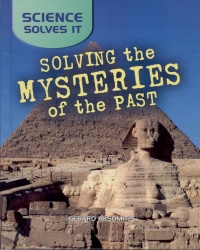 |
Solving the Mysteries of the Past. (Science Solves It).
Gerald Aksomitis.
St. Catharines, ON: Crabtree, 2009.
32 pp., pbk. & hc., $9.95 (pbk.), $20.76 (hc.).
ISBN 978-0-7787-4178-7 (pbk.), ISBN 978-0-7787-4171-8 (RLB).
Subject Headings:
Archaeology-Juvenile literature.
Antiquities-Juvenile literature.
Excavations (Archaeology)-Juvenile literature.
Archaeologists-Juvenile literature.
Grades 3-7 / Ages 8-12.
Review by Barbara McMillan.
*** /4
|
| |
|
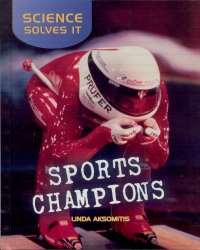 |
Sports Champions. (Science Solves It).
Linda Aksomitis.
St. Catharines, ON: Crabtree, 2009.
32 pp., pbk. & hc., $9.95 (pbk.), $20.76 (hc.).
ISBN 978-0-7787-4179-4 (pbk.), ISBN 978-0-7787-4172-5 (RLB).
Subject Headings:
Sports sciences-Juvenile literature.
Sports-Technological innovations-Juvenile literature.
Grades 3-7 / Ages 8-12.
Review by Barbara McMillan.
*** /4
|
| |
|

excerpt:
Diatoms are tiny, single-celled algae that live in the ocean and river water. When a body is found in water, scientists look for diatoms to tell them about what happened to the victim. As the body sunk, water flooded into its mouth and lungs. If the person was alive in the water, his or her beating heart would have pumped the diatoms from the lungs into other parts of the body. If the person was already dead when he or she hit the water, diatoms would only make it as far as the lungs. (From Crimebusting and Detection.)
The first surgeons were not doctors –– they were barbers! If you had a bad cut that needed stitching and bandaging, you went to the barber. The barber's shop had a red and white pole outside, like a bandage covered in blood. Some barbers still use this sign, but all they will offer today is a haircut and a shave! (From Miraculous Medicines.)
Earthquakes can knock down buildings and trap people inside. This makes rescues difficult, so the latest technology is used to find survivors. Thermal imaging cameras detect a person's body heat beneath mounds of concrete and show rescuers where to dig. (From Rescue Missions.)
The Millennium Seed Project based in Britain plans to collect seeds and plant specimens from 24,200 species worldwide. It is an insurance policy against extinction. If a plant species goes extinct, the seed bank can plant some of the stored seeds –– even if decades have passed. It is not a perfect system, though. For one thing, the bank will store only about a quarter of the 100,000 plant species that are under threat worldwide. (From Saving Endangered Plants and Animals.)
The work of American forensic anthropologist William Bass has given us a much better idea of how a human body decays. He set up the Body Farm near the University of Tennessee Medical Center in 1971. The farm is filled with human bodies that are left to decay. The discoveries made at the Body Farm are used to help figure out what happened to dead bodies found elsewhere. (From Solving the Mysteries of the Past.)
During practice your body is being trained to move in certain ways. Your brain is also learning. Scientists have investigated how the brain works during practice by studying ballet dancers. They recorded a dancer's brain activity while he watched ballet on a video. When he saw a move he already knew how to do, the dancer's brain responded to it in the same way as if he was actually dancing. However, his brain did not do this when he watched a video of moves that he had not learned. Watching videos of sports can be a useful practice. (From Sports Champions.)
"Science Solves It!" is a new series published by Crabtree that will appeal to early adolescents interested in learning about exciting and often challenging careers. As they read about the work of forensic scientists, emergency room doctors, emergency service personnel, wildlife conservationists, archaeologists, and athletes, they also become aware of the scientific and technological innovations that make these careers safe and, in some cases, possible. Thus, the series title refers more to specialized tools, equipment and processes than to the questions and phenomena scientists have answered or explained.
Each of the six books in the series is composed of four chapters, a glossary of terms introduced and defined in the text, a short list of books and websites where readers can find additional relevant information, and an index. The 32 pages of each book are illustrated with photographic images, beautifully reproduced in colour and, on occasion, a full-page colour illustration. Each pictorial representation helps to clarify information presented in the text. Like many popular non-fiction books for 8 to 12-year-olds, all printed information is presented in boxes of various sizes with borders or a coloured background or below a headline. It's rare to find a passage greater than six sentences in length and, with the exception of the table of contents, glossary and index, full-pages of printed text are nonexistent.
As the excerpts above suggest, the books in the "Science Solves It!" series are filled with information that is as applicable to social studies as it is to science. This is particularly evident in Miraculous Medicines and Crimebusting and Detection, two books written by Hélène Boudreau. Unlike authors Gerard Aksomitis, Linda Aksomitis and James Bow, Boudreau's writing is contextualized, and each piece of information that she presents is, in some way, tied to the context and related to the context in a way that resembles the work conducted in a hospital or crime laboratory. In Miraculous Medicines, the reader follows the treatment given to four visitors at an emergency room in a hospital: Michelle, who has a sprained ankle; Bradley, who has a badly injured arm; Delaney, who is bleeding from stomach wounds; and Angelo, whose heart has stopped beating. Boudreau describes who is seen first by the ER staff and why. She explains the consequences of a "code blue signal" and the procedure for determining that bones in Bradley's wrist were broken, as well as other forms of medical imaging used by radiologists to "look inside a patient's body." Because hospitalization can be accompanied by surgery or medicine to alleviate pain or infection, Boudreau helps readers to know the numerous ways in which medicines can be taken and the process of drug testing both for over-the-counter and prescription medicines, including antibiotics. She explains the role of anaesthetics in surgery and the need for aseptic conditions in operating rooms. She ends Miraculous Medicines with Delaney's death and a discussion of organ transplant surgery. In a similar fashion, Boudreau draws readers into Crimebusting and Detection by asking them to solve an imaginary crime in which a man and a woman have robbed a bank and shot a customer. Of course, she's there to help them to know what to do, how to examine the evidence, and draw the right conclusions. In addition, Boudreau includes information on body identification, forgery, fraud, hi-tech crime and cyber sleuths that make use of the latest technologies such as genetic fingerprints.
After reading Miraculous Medicines and Crimebusting and Detection, I couldn't help but wish that all six books in the series were similarly written. I found the two by Boudreau much more engaging than those that simply followed one interesting piece of information with another, chapter by chapter. Even so, I suspect readers much younger than myself who are simply curious about champion athletes, environmental degradation and the loss of biodiversity, human history, and fire, water, and mountain rescuers will be delighted to have these books in their hands.
Recommended.
Barbara McMillan is a teacher educator and a professor of science education in the Faculty of Education, the University of Manitoba.

To comment
on this title or this review, send mail to cm@umanitoba.ca.
Copyright © the Manitoba Library Association. Reproduction for personal
use is permitted only if this copyright notice is maintained. Any
other reproduction is prohibited without permission.
NEXT REVIEW |
TABLE OF CONTENTS FOR THIS ISSUE
- October 16, 2009.
AUTHORS |
TITLES |
MEDIA REVIEWS |
PROFILES |
BACK ISSUES |
SEARCH |
CMARCHIVE |
HOME |





